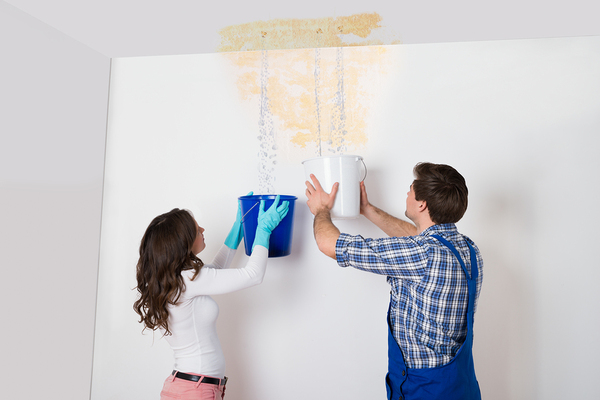Familiarize Yourself With 6 Common Reasons Behind Water Seepage in Your House
Familiarize Yourself With 6 Common Reasons Behind Water Seepage in Your House
Blog Article
We've found this article pertaining to Top Causes of Home Water Leaks listed below on the web and accepted it made sense to talk about it with you on this page.

Leakages not only trigger waste of water but can also create unnecessary damages to your house as well as advertise unwanted natural growth. Water leaks might go undetected considering that most of the pipework in our home is concealed. By looking and recognizing for everyday scenarios that trigger leaks, you can secure your home from future leakages and unneeded damages. Today, we will consider six leakage creates that may be creating your pipelines to trickle.
Instantaneous temperature level adjustments.
Severe temperature level adjustments in our pipelines can trigger them to expand and contract all of a sudden. This development as well as contraction may trigger cracks in the pipelines, specifically if the temperature are below freezing. If you kept an eye on exactly how your plumbing works, it would certainly be best. The presence of the formerly mentioned scenarios frequently shows a high risk.
Corroded water systems
This might be the reason of discoloration or warping on your water pipelines. If our plumbing system is old, consider changing the pipelines given that they are at a higher threat of rust than the more recent designs.
Defective Pipe Joints
The factor at which your pipes attach is often the weakest web link in the waterline. Pipe joints can degrade with time, resulting in water leakages. The bulk of pipe joints are not quickly noticeable. If you have loud pipelines that make ticking or banging sounds, especially when the warm water is turned on, your pipe joints are most likely under a lot of pressure. It is suggested to have your plumber inspect your system once a year.
Intruding roots
Many water leaks begin outside your home rather than inside it. If you notice an abrupt reduction in water pressure, say in your faucet, take time to head out as well as examine your backyard. You might see damp patches or sinkholes in your yard, which might indicate that tree roots are attacking water lines triggering water to permeate out. You can have your plumber check for breach, particularly if you have trees or shrubs near your property.
Poor Water Connectors
At times, a leakage can be triggered by loosened pipes and pipelines that supply your devices. In situation of a water links leak, you may see water running straight from the supply line or puddles around your devices.
Clogged Drains
Obstructed drains could be annoying as well as inconveniencing, yet they can often wind up triggering an overflow bring about rupture pipelines. Maintain eliminating any kind of materials that might go down your drains that can clog them to prevent such inconveniences.
All the above are root causes of leakages however not all water leakages arise from plumbing leaks; some leaks may originate from roof leaks. All leakages must be fixed immediately to prevent water damages.
Leaks not only trigger waste of water however can also trigger unneeded damages to your home and promote undesirable organic growth. By recognizing and looking for daily circumstances that create leakages, you can secure your residence from future leakages and also unneeded damages. Today, we will look at six leak creates that might be triggering your pipes to drip.
At times, a leakage can be caused by loosened hose pipes and also pipelines that supply your devices. In instance of a water connections leak, you may notice water running straight from the supply line or puddles around your devices.
How To Check For Water Leak In Your Home
How To Check for Leaks
The average household's leaks can account for nearly 10,000 gallons of water wasted every year and ten percent of homes have leaks that waste 90 gallons or more per day. Common types of leaks found in the home are worn toilet flappers, dripping faucets, and other leaking valves. These types of leaks are often easy to fix, requiring only a few tools and hardware that can pay for themselves in water savings. Fixing easily corrected household water leaks can save homeowners about 10 percent on their water bills.
To check for leaks in your home, you first need to determine whether you're wasting water and then identify the source of the leak. Here are some tips for finding leaks:
Take a look at your water usage during a colder month, such as January or February. If a family of four exceeds 12,000 gallons per month, there are serious leaks.
Check your water meter before and after a two-hour period when no water is being used. If the meter changes at all, you probably have a leak.
Identify toilet leaks by placing a drop of food coloring in the toilet tank. If any color shows up in the bowl after 10 minutes, you have a leak. (Be sure to flush immediately after the experiment to avoid staining the tank.)
Examine faucet gaskets and pipe fittings for any water on the outside of the pipe to check for surface leaks.
Undetected water leaks can happen without the home or business owner even realizing. If you suspect a water leak, but not able to find the source. It is time to contact a professional water leak detection service, The Leak Doctor.
How To Find a Water Leak In Your Home
https://www.leakdoctor.com/blog/How-To-Check-For-Water-Leak-In-Your-Home_AE197.html

I'm very taken with Top Causes of Home Water Leaks and I hope you liked the new blog post. Appreciated our blog? Please share it. Help somebody else discover it. Thank you for your time. Don't forget to pay a visit to our website back soon.
Dial, we'll handle! Report this page